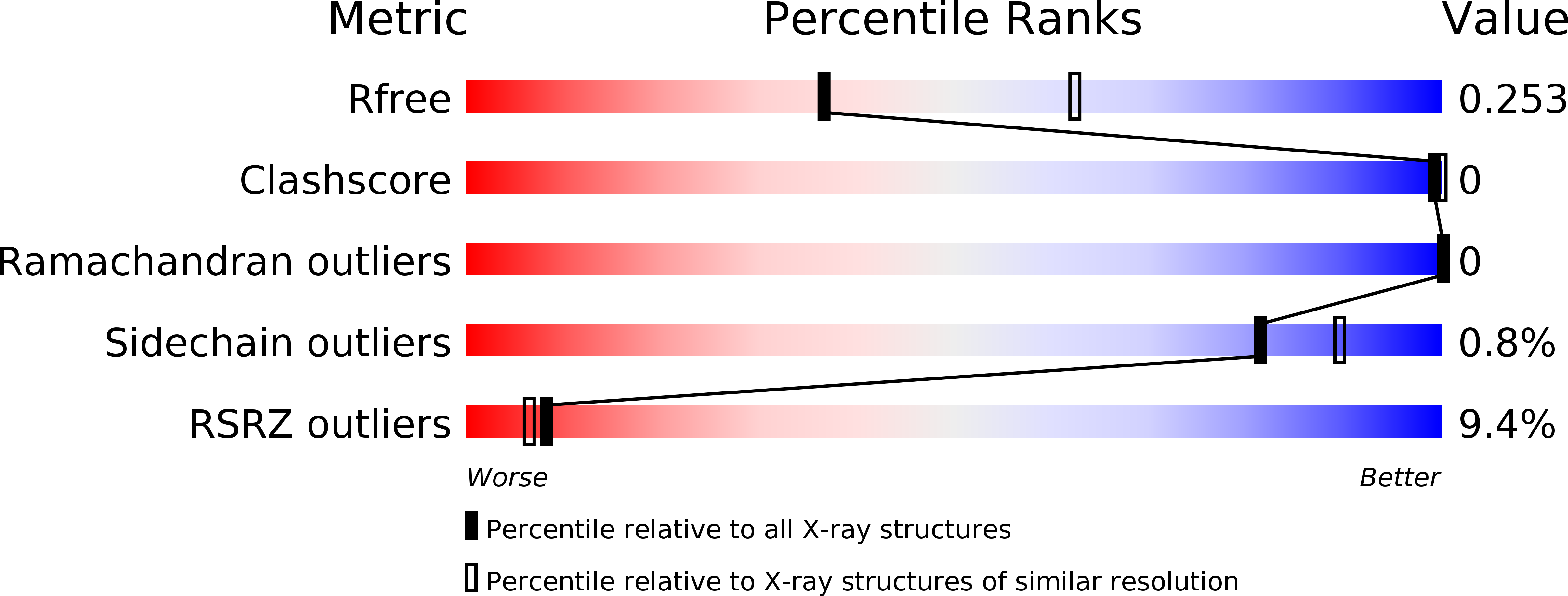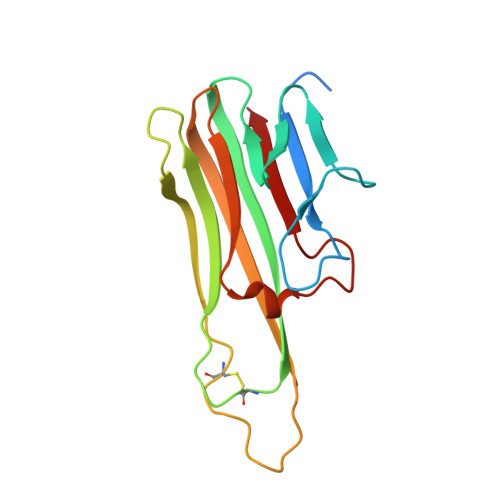Mechanism of Action of the Tumor Vessel Targeting Agent NGR-hTNF: Role of Both NGR Peptide and hTNF in Cell Binding and Signaling.
Valentinis, B., Porcellini, S., Asperti, C., Cota, M., Zhou, D., Di Matteo, P., Garau, G., Zucchelli, C., Avanzi, N.R., Rizzardi, G.P., Degano, M., Musco, G., Traversari, C.(2019) Int J Mol Sci 20
- PubMed: 31547231
- DOI: https://doi.org/10.3390/ijms20184511
- Primary Citation of Related Structures:
6RMJ - PubMed Abstract:
NGR-hTNF is a therapeutic agent for a solid tumor that specifically targets angiogenic tumor blood vessels, through the NGR motif. Its activity has been assessed in several clinical studies encompassing tumors of different histological types. The drug's activity is based on an improved permeabilization of newly formed tumor vasculature, which favors intratumor penetration of chemotherapeutic agents and leukocyte trafficking. This work investigated the binding and the signaling properties of the NGR-hTNF, to elucidate its mechanism of action. The crystal structure of NGR-hTNF and modeling of its interaction with TNFR suggested that the NGR region is available for binding to a specific receptor. Using 2D TR-NOESY experiments, this study confirmed that the NGR-peptides binds to a specific CD13 isoform, whose expression is restricted to tumor vasculature cells, and to some tumor cell lines. The interaction between hTNF or NGR-hTNF with immobilized TNFRs showed similar kinetic parameters, whereas the competition experiments performed on the cells expressing both TNFR and CD13 showed that NGR-hTNF had a higher binding affinity than hTNF. The analysis of the NGR-hTNF-triggered signal transduction events showed a specific impairment in the activation of pro-survival pathways (Ras, Erk and Akt), compared to hTNF. Since a signaling pattern identical to NGR-hTNF was obtained with hTNF and NGR-sequence given as distinct molecules, the inhibition observed on the survival pathways was presumably due to a direct effect of the NGR-CD13 engagement on the TNFR signaling pathway. The reduced activation of the pro survival pathways induced by NGR-hTNF correlated with the increased caspases activation and reduced cell survival. This study demonstrates that the binding of the NGR-motif to CD13 determines not only the homing of NGR-hTNF to tumor vessels, but also the increase in its antiangiogenic activity.
Organizational Affiliation:
MolMed SpA, 20132 Milano, Italy. barbara.valentinis@molmed.com.














